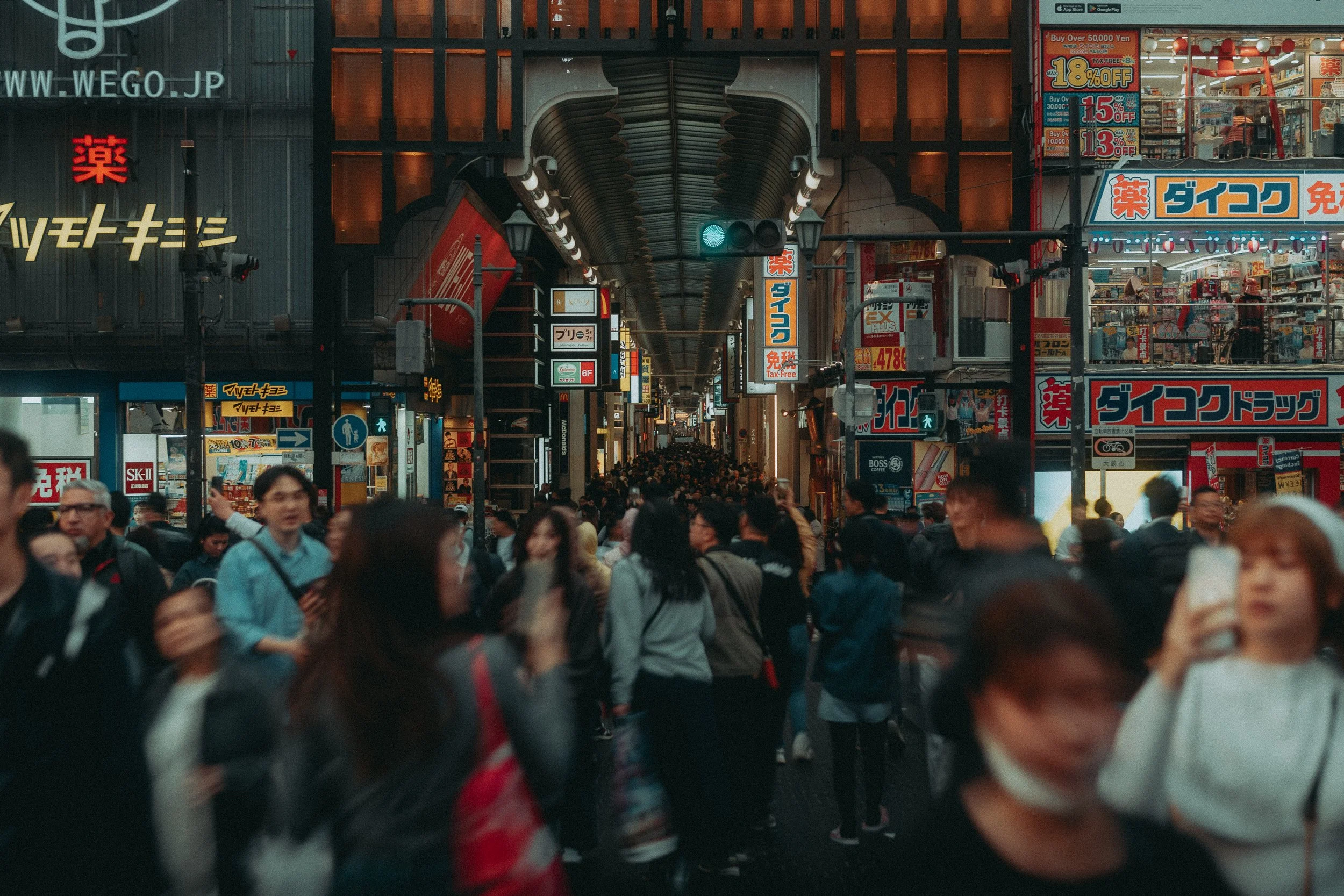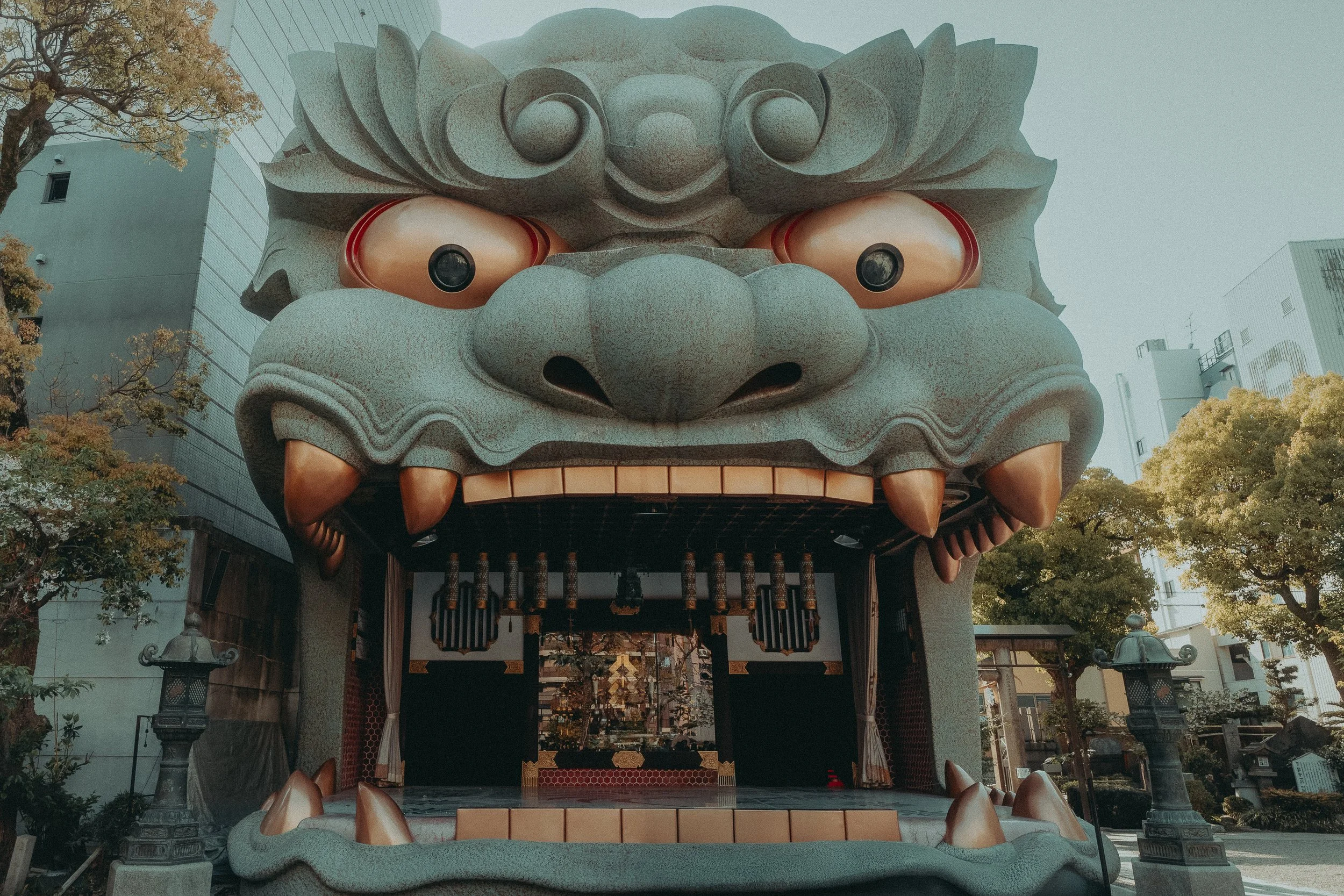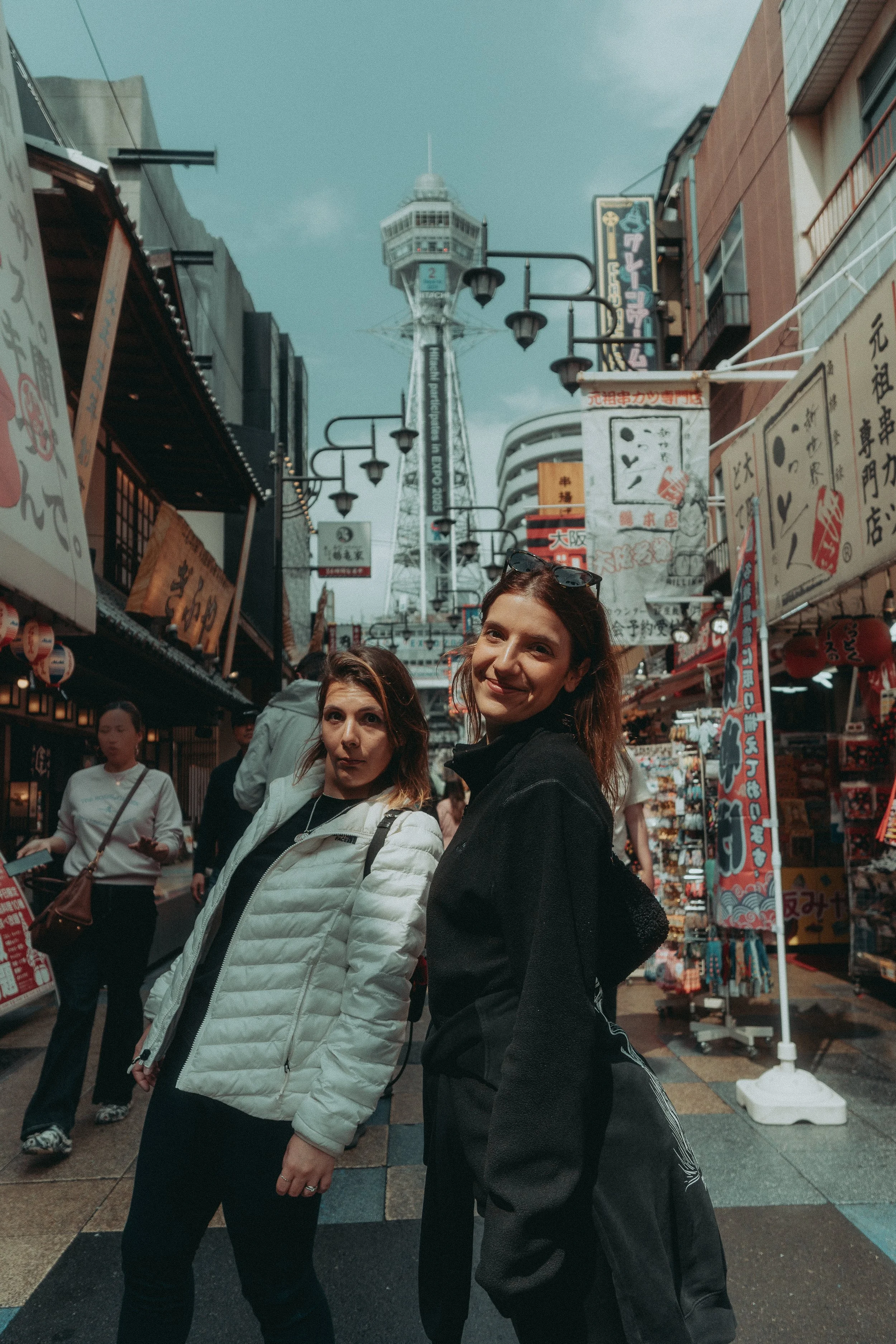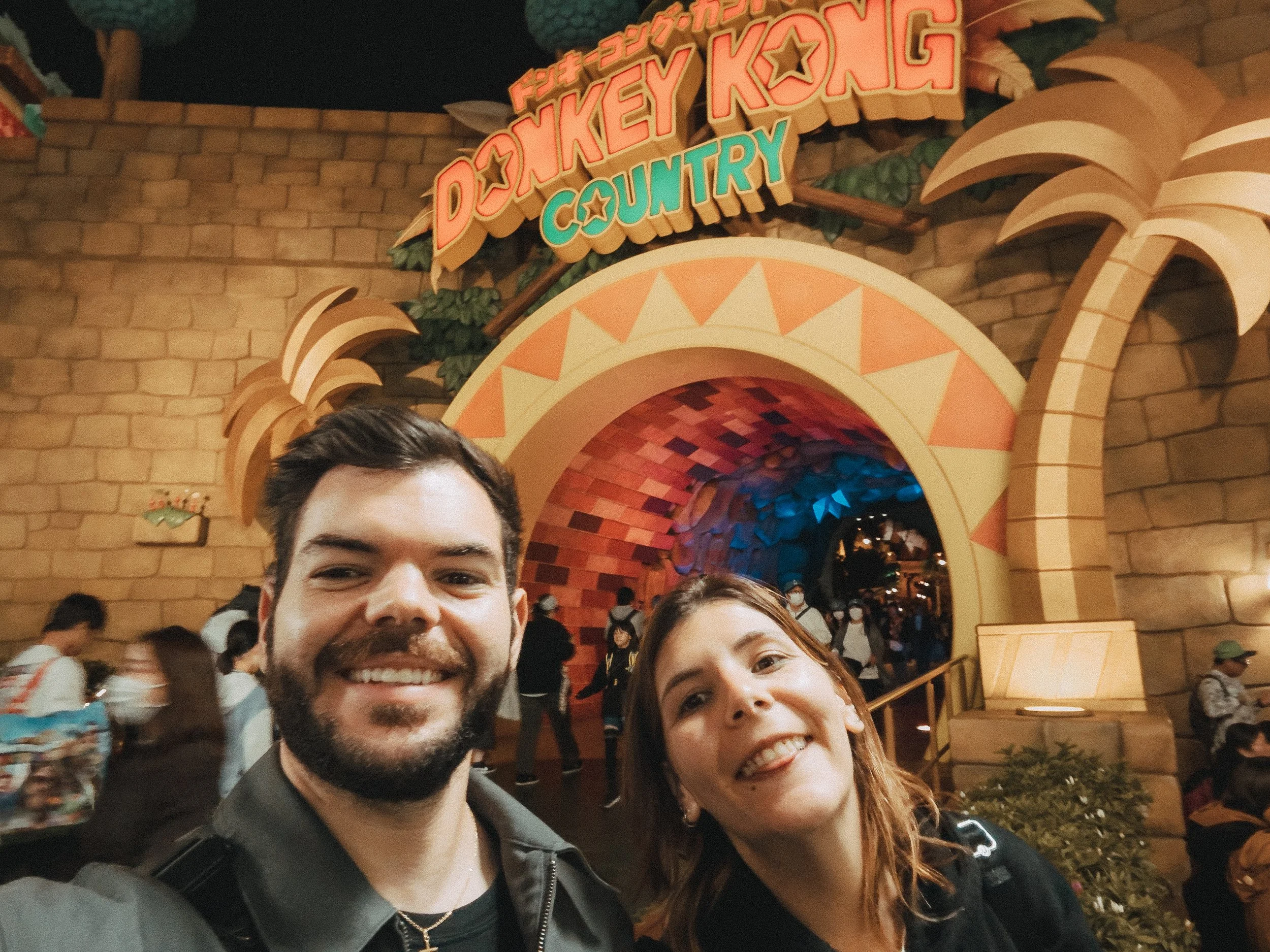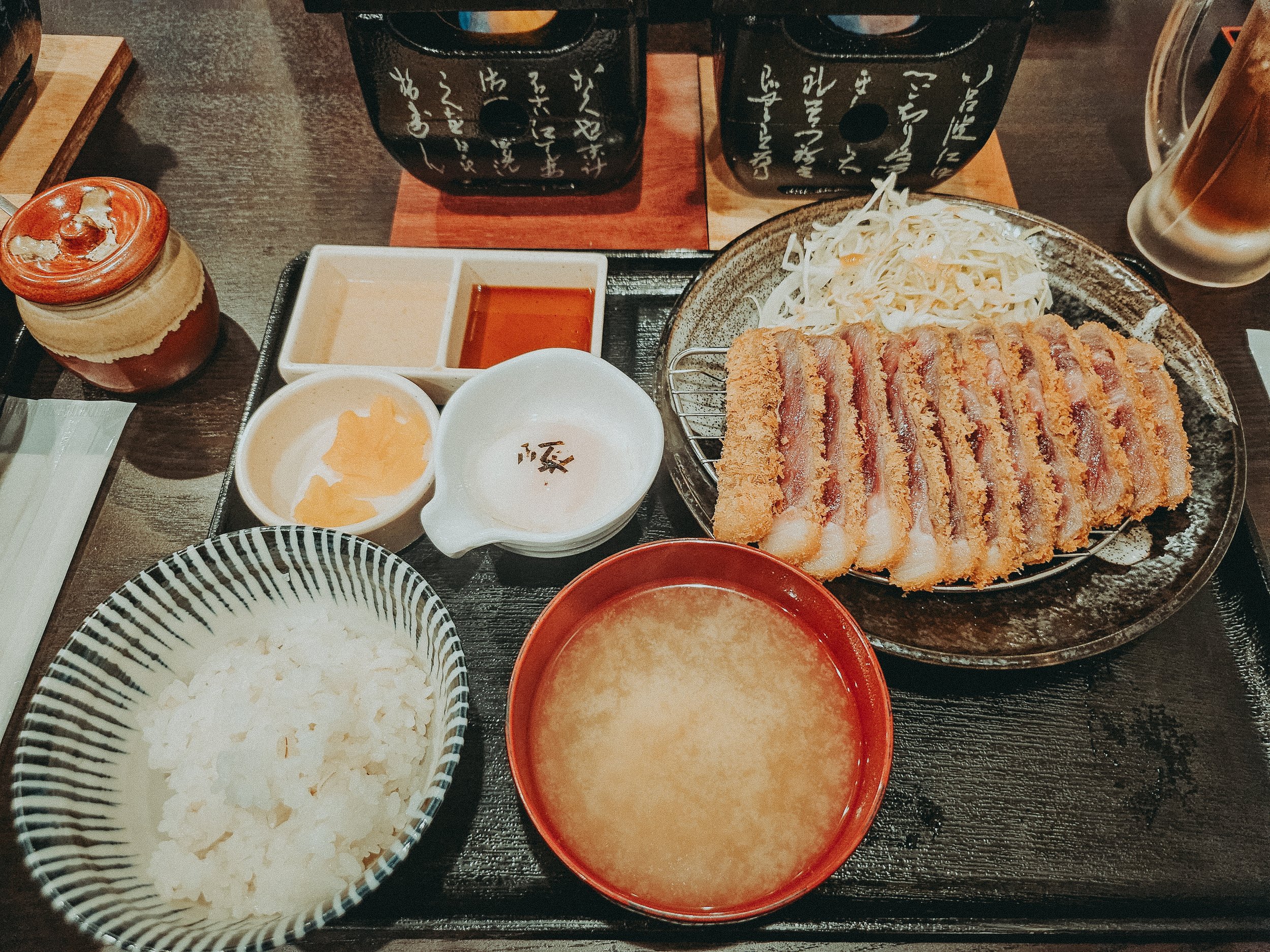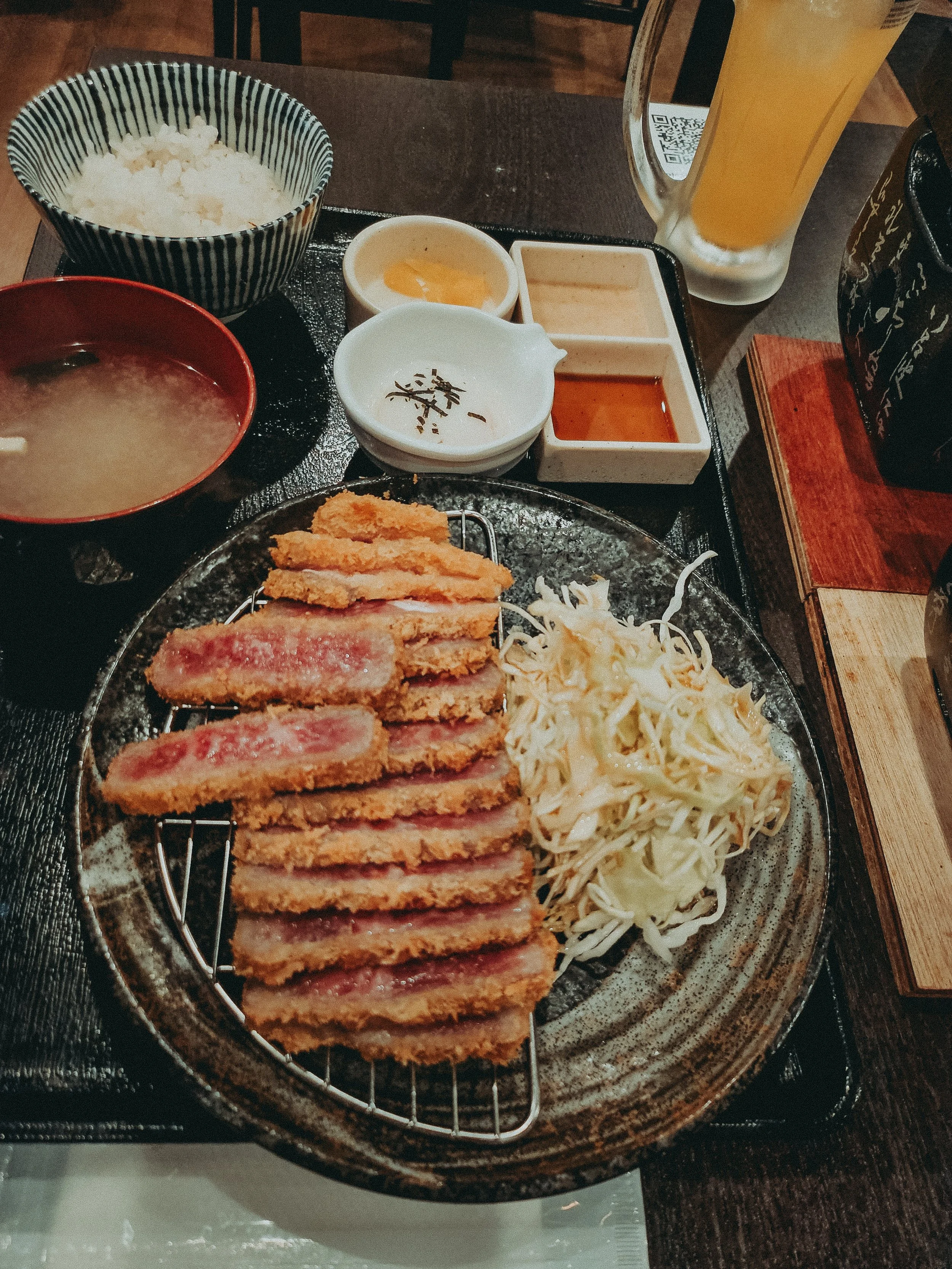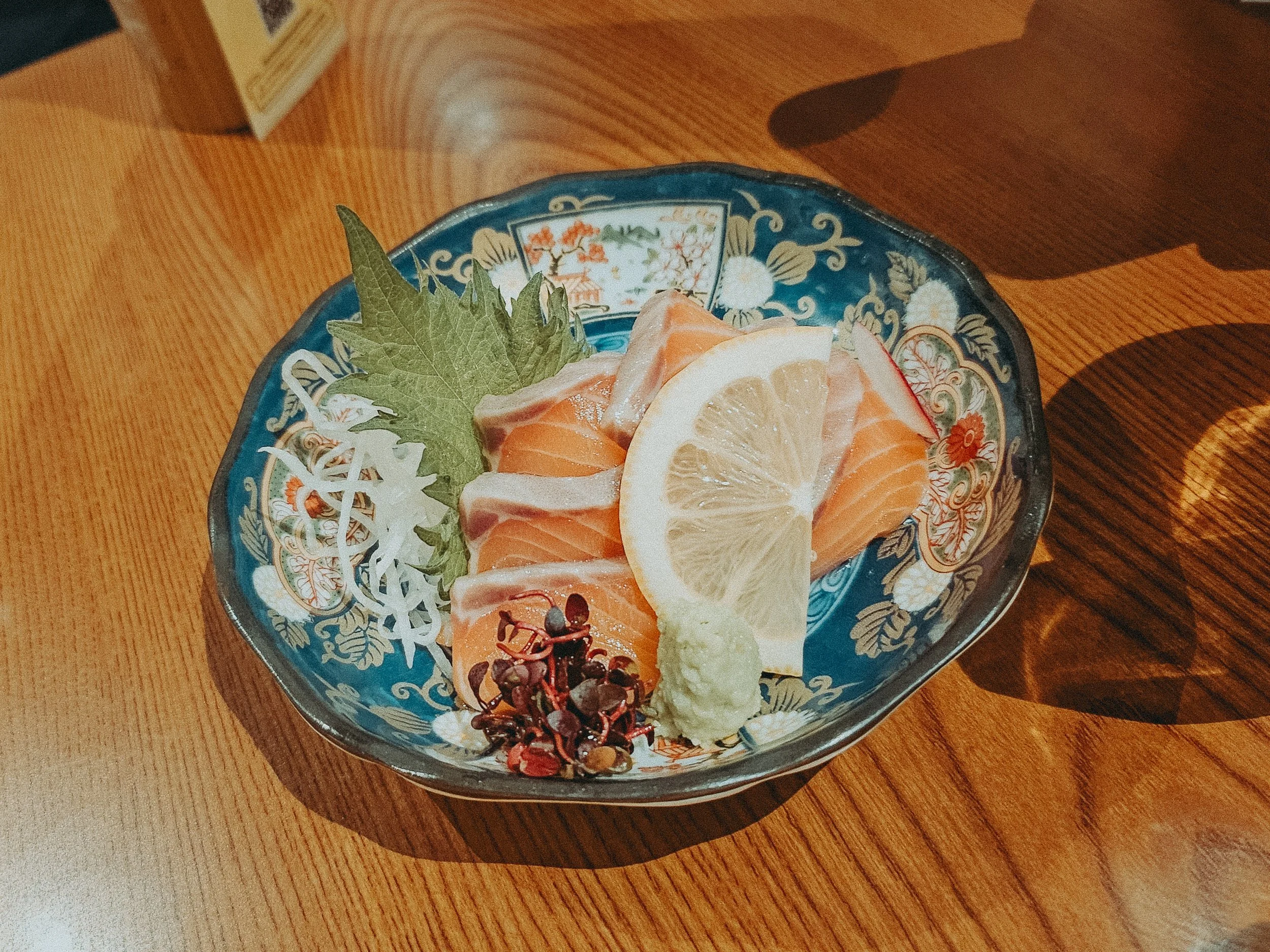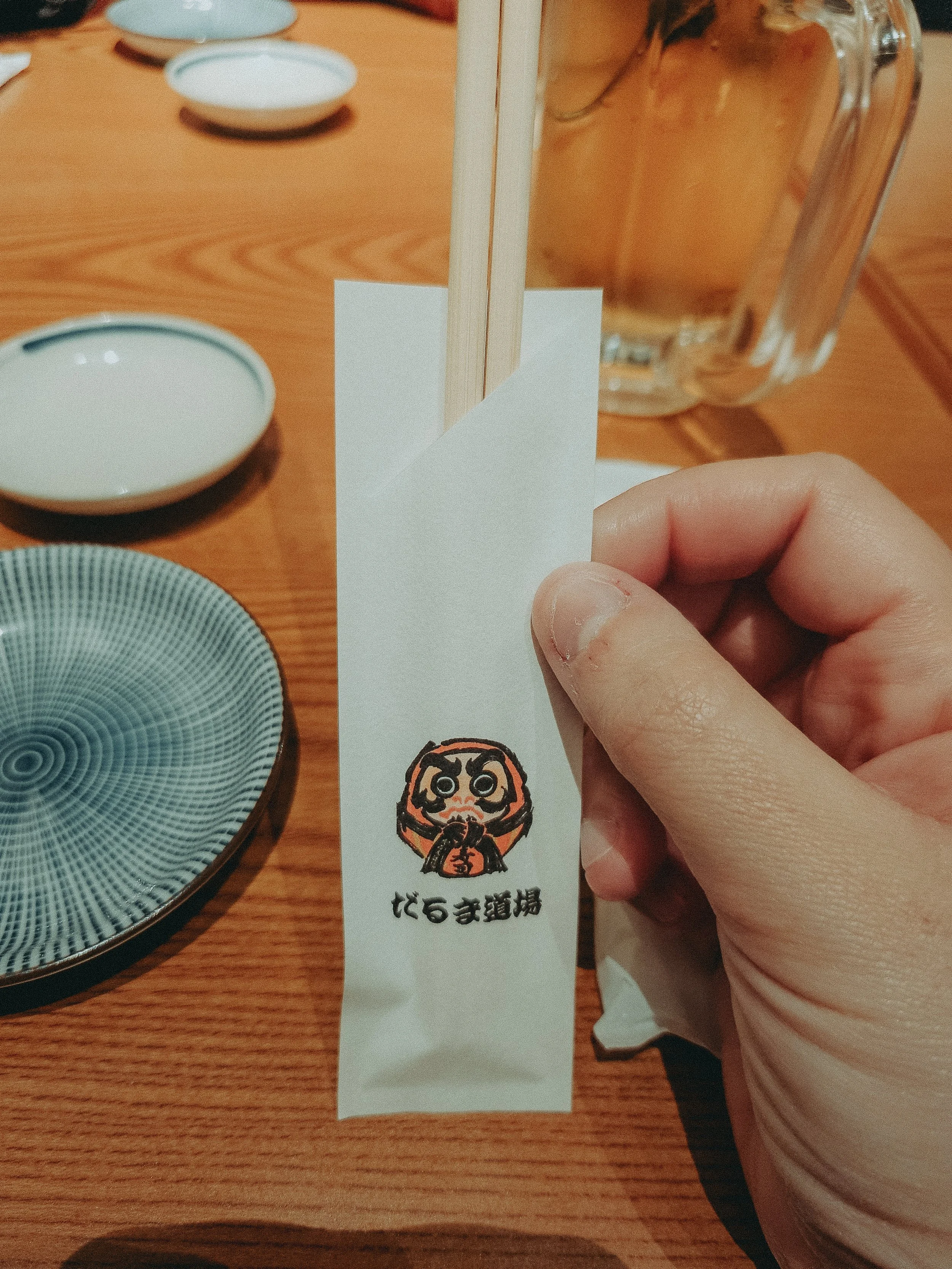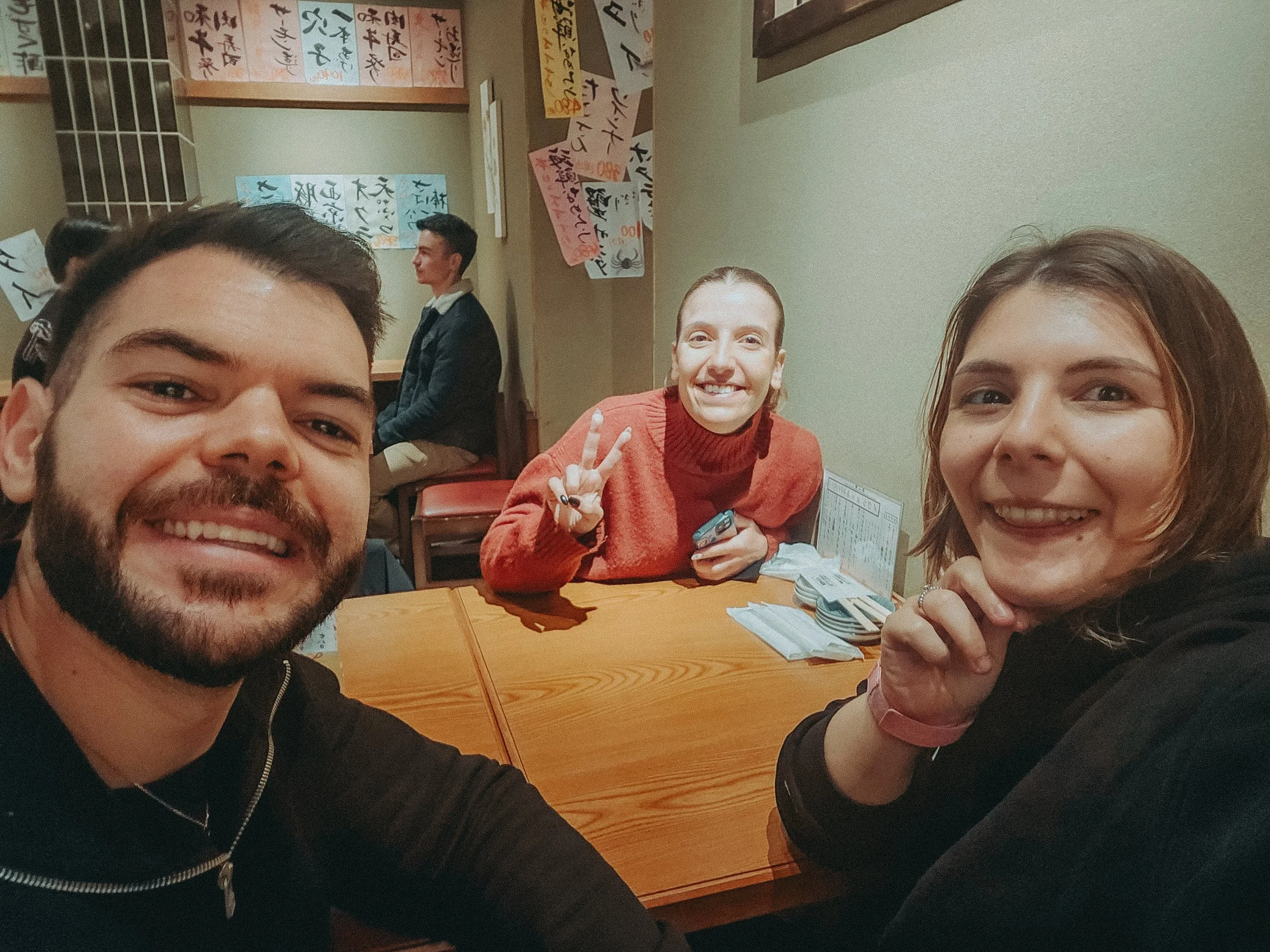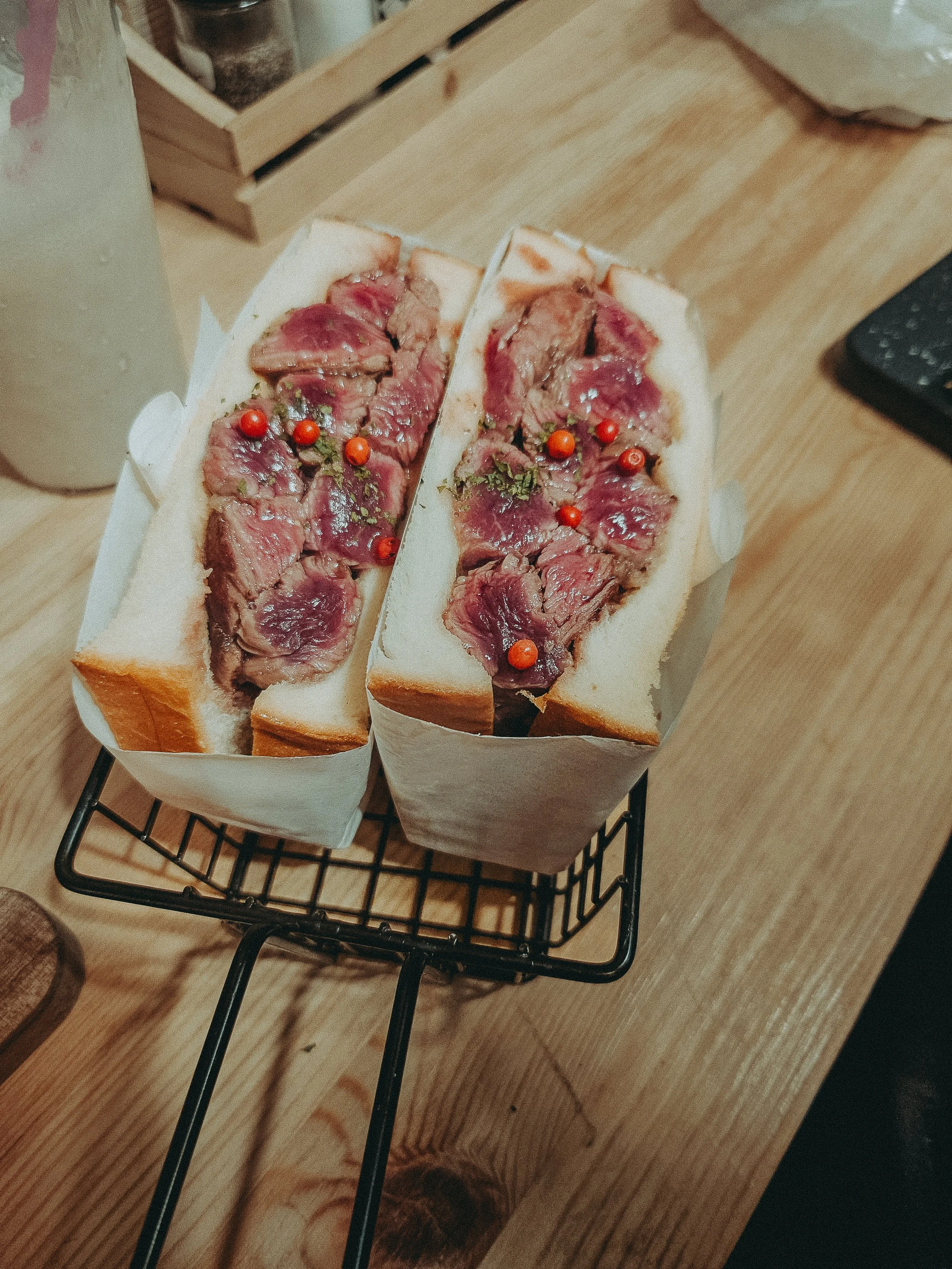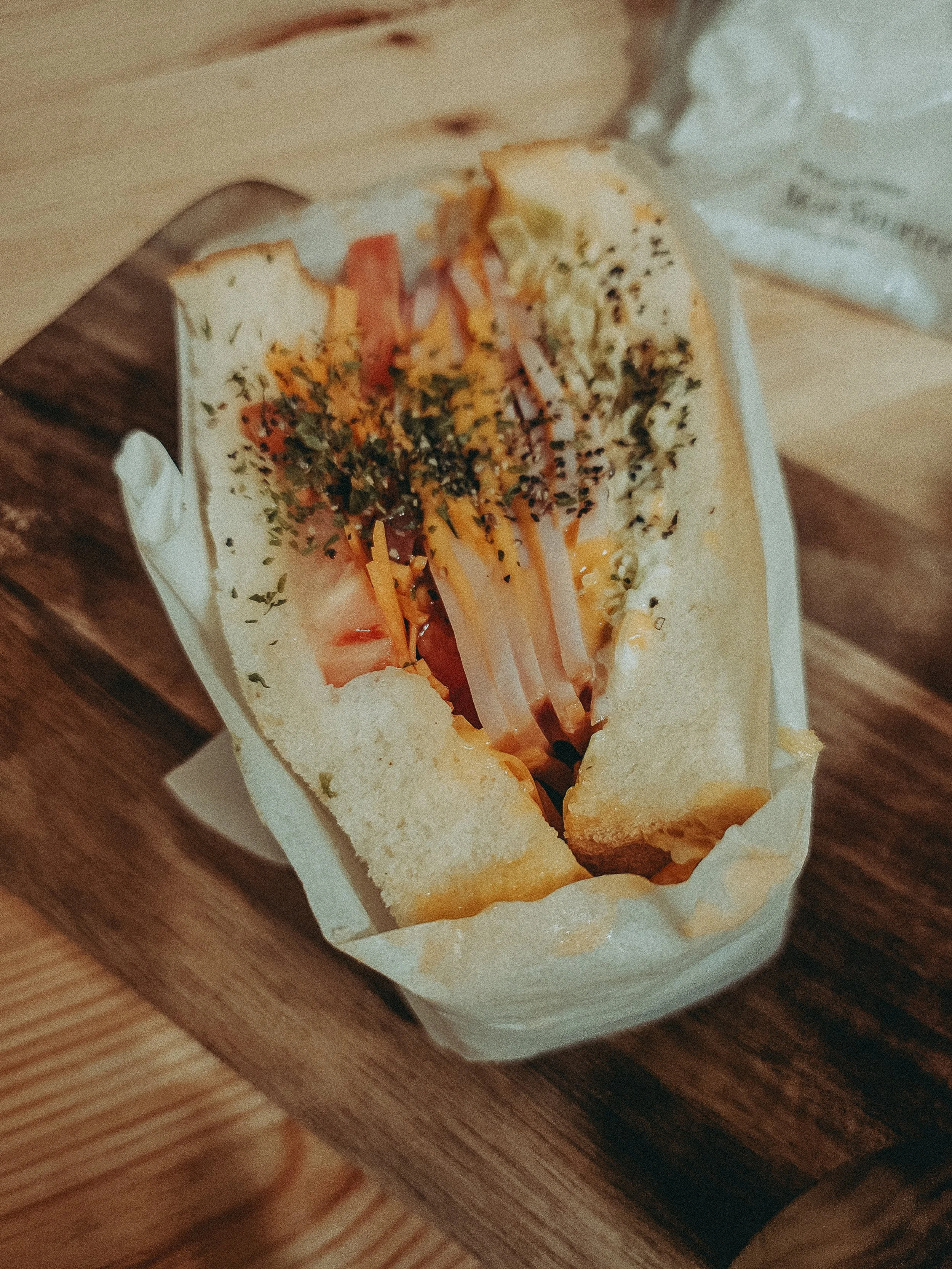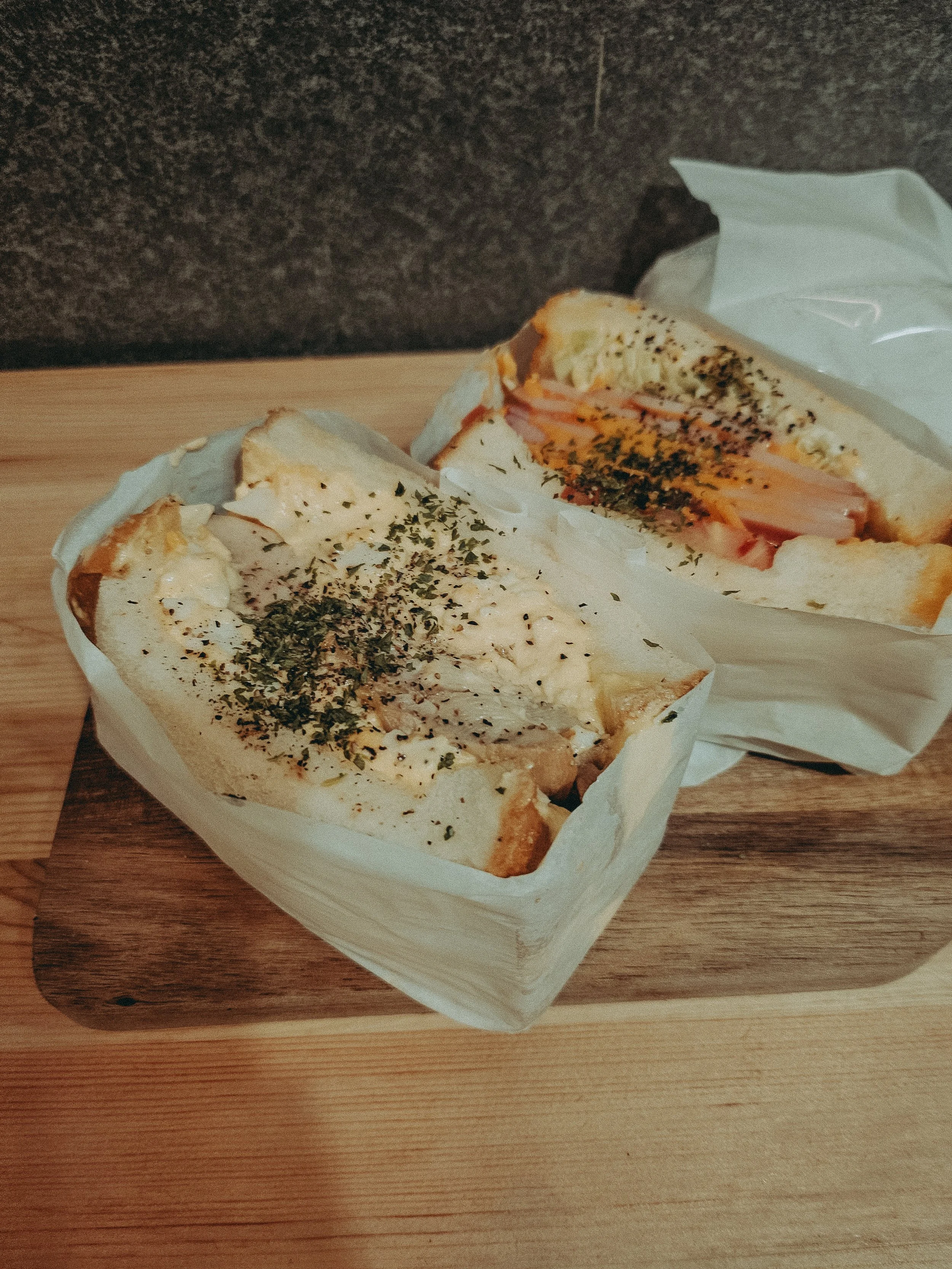Ultimate Osaka Travel Guide: Top Things to Do and Best Food Spots (2025 edition)
Since we were spending a year in Japan, we knew we had to return to Osaka — and this time, really do it justice. Just like in Kyoto and Tokyo, we decided to spend two full weeks in Osaka to dig deeper, explore the lesser-known corners, and of course, eat our weight in street food.
Nicknamed “The Kitchen of Japan,” Osaka is a feast for all senses. Staying in a cozy apartment helped us stretch our budget (and allowed the occasional home-cooked meal — though let’s be honest, Vasco was more focused on eating out than staying in).
So here it is — our guide to Osaka’s hidden gems, must-see sights, and all the mouthwatering food you have to try.
JUMP TO A CATEGORY
How to Get There?
Osaka is incredibly well-connected, whether you’re flying in, riding the Shinkansen, or hopping over from a nearby city. It’s easy to get to, and with the right travel pass, you can even save money while exploring the entire Kansai region.
We arrived from Nara, just a smooth one-hour local train ride. But depending on where you're coming from, here are your best options:
By Plane
Kansai International Airport (KIX) is the main international gateway to Osaka and the Kansai region. From KIX, you can take:
JR Haruka Express to Tennoji or Shin-Osaka (around ¥2,500–¥3,000, 35–50 mins)
Nankai Airport Express to Namba Station (about ¥930, and 45 mins)
By Train
If you’re coming from Tokyo, the Shinkansen (bullet train) is the fastest and most comfortable option:
Tokaido Shinkansen (Nozomi): Tokyo to Shin-Osaka in just 2.5 hours (~¥14,500 one way)
Hikari or Kodama: Slightly slower (~3 to 4 hours) but covered by the Japan Rail Pass
By Regional Trains (Kansai Area)
Kyoto – 30 mins by JR Special Rapid (¥570)
Nara – 45–60 mins via JR or Kintetsu (from ¥570)
Kobe – 25 mins by JR (¥410)
Himeji – Around 1 hour by JR Rapid Service (¥1,520)
Money-Saving Passes
There are several passes that make traveling in and around Osaka much easier, and cheaper!
A prepaid IC card (like Suica or Pasmo), designed for foreign tourists.
Can be used on JR, subway, private railways, and buses throughout the Kansai area.
Comes with discounts at attractions in Osaka, Kyoto, Nara, and more.
Initial cost: ¥3,000 (includes ¥500 deposit + ¥2,500 balance)
Covers unlimited travel on JR trains in Kansai for 1–4 days.
Great if you're planning multiple day trips (like to Himeji, Nara, or Kobe).
Ideal if you’re staying within Osaka city and want to do sightseeing.
Includes unlimited subway/bus travel + free entry to over 40 attractions (Osaka Castle, Umeda Sky Building, river cruises, etc.)
Stay Connected: Pocket Wi-Fi is Your Best Friend
Since we were staying for a long time in Japan, reliable internet was non-negotiable. We rented our Pocket Wi-Fi from Japan Wireless, which offers flexible plans for short and long stays. They even deliver it to your hotel or the airport—so convenient that even Sara didn’t need a Plan B (and that’s saying something).
Returning it is as simple as dropping the prepaid envelope into a mailbox at the airport (before security!) on your last day. Easy peasy, even for Vasco, who usually leaves logistical matters to Sara.
Gear Recommendations for Photography in Osaka
These recommendations are based on the gear we used to capture everything about Osaka. Our Sony A6700 (cropped sensor) paired with the Sigma 10-18mm f2.8 for wide shots and vlogs, the 35mm f1.4 for portraits and street photography, the 70-200mm f2.8 for wildlife and zoom shots, and the 16mm f1.4 for night and astro photography. We used a Marumi Black Mist 1/4 filter ( this is an equivalent) for a cinematic look and the Freewell M2 kit for ND and UV filtering. Our DJI 4K Pro Mini is also a great way to get aerial shots where you have permission to fly (check our Drone flying in Japan blog post here).
Activities We Recommend you Book
Universal Studios Osaka – Nintendo World (Express Pass) and the Studio Pass: check our Universal Studios Guide here!
Osaka Expo (check our guide here if you are coming in 2025)
The Essentials of Osaka
Osaka has sooooo much to do, it will drive you crazy! So let’s start with the classic must-visits that showcase the soul of the city, from history and culture to food.
Osaka Castle
One of Japan’s most iconic landmarks, Osaka Castle is a must-see (especially during cherry blossom season). Inside is a museum dedicated to the life of Toyotomi Hideyoshi and Osaka’s feudal history.
Admission: ¥600
Vasco’s Photography Tip: I used the Sigma 10-18mm f2.8 for wide shots of the castle and moat, especially from Nishinomaru Garden. For smaller details or people in frame, switched to the 35mm f1.4. Added the Marumi Black Mist 1/4 filter at golden hour for that cinematic, soft glow.
Dotonbori
This neon-lit district is pure Osaka energy. The iconic Glico Man sign, endless takoyaki stalls, ramen spots, and weird snacks make it a foodie and photography heaven.
Vasco’s Photography Tip: I suggest the 35mm~50mm to capture street life and portraits. For vlog-style wide perspectives or capturing the scale of all the neon, I used the Sigma 10-18mm. At night, slap on the 16mm with a Black Mist filter for dreamy, glowing lights, especially around the Glico Man sign and canal reflections.
Kuromon Ichiba Market
A 190-year-old market filled with fresh seafood, local produce, and must-try snacks. Vasco had a takoyaki spree here, and Sara had to drag him away before he turned into an octupus himself.
Must Trys: Uni, grilled scallops, takoyaki, Wagyu skewers, and fresh fruit sticks.
Vasco’s Photography Tip:
Stick with the 35mm to shoot food, faces, and market textures. The narrow depth of field will help isolate subjects in crowded stalls.
Shitennoji Temple
Founded in 593, this is Japan’s oldest officially administered Buddhist temple.
Admission: Free to temple grounds, inner area ¥300
Vasco’s Photography Tip: Used the 70-200mm f2.8 to compress the five-story pagoda and capture temple-goers from a distance. Early morning here is quiet and beautifully lit.
ABENO HARUKAS
Japan’s tallest skyscraper with a 360° observatory at the top. The view of Osaka's urban skyline is jaw-dropping, especially at sunset.
Admission: ¥1,500, but super worth it
Vasco’s Photography Tip: Head up near sunset. Used the 10-18mm & the 35mm.
Kuchu Teien Observatory (Umeda Sky Building)
A floating garden observatory that offers panoramic views of the city from a unique rooftop skywalk.
Admission: ¥1,500
Sara’s Tip: Perfect for couples, they even have "love locks" at the top. Make sure you check the link to buy tickets with the locks included.
Vasco’s Photography Tip: This is where the 10-18mm shines, the skywalk platform is tight but panoramic. At night, I used the 16mm f1.4 for the skyline and city lights. If you’re doing video, don’t forget to bring an ND Filter :)
Namba Yasaka Shrine
This shrine features a giant lion head that looks like it’s ready to eat your bad luck. Unusual and totally worth the detour. Try to go early, since it is always full!
Vasco’s Photography Tip: Shoot the dramatic lion-head stage you will need a wide lens for sure :)
Shotengai Shopping Streets
From Tenjinbashisuji to Sennichimae, Osaka’s shotengai (covered shopping arcades) are local, authentic, and full of surprises, snacks, souvenirs, and people-watching.
Sara’s Tip: Perfect for rainy days. Bring cash, many of the best stalls are still cash-only. Really try to venture out to the basement shops, many of them are super old and have very traditional souvenirs!
Universal Studios Japan
For fans of Mario Kart, Harry Potter, Minions and more, this is the ultimate theme park in Japan (arguably even better than Tokyo Disney!).
Check out our USJ Guide for queue hacks, best food stops, and how to enter Super Nintendo World smoothly. Keep in mind that if you want to come here, it will take a full day out of your itinerary, so plan accordingly!
Admission: Starts around ¥8,600 (check seasonal rates)
Osaka Aquarium Kaiyukan
One of the world’s largest and most impressive aquariums, Kaiyukan is home to a huge amount of marine life, including manta rays, jellyfish, and the star of the show, the whale shark. The circular design leads you through multiple aquatic environments from the Pacific Rim, all viewed through massive floor-to-ceiling tanks.
Admission: ¥2,700 (adults), ¥1,400 (children)
Vasco’s Photography Tip: Aquarium lighting can be tricky, so use the 35mm f1.4 wide open to handle low light.
Teamlab Botanical Garden Osaka
This garden lights up at night. It’s such a unique way to experience art in a natural setting, definitely a must-see for art lovers and anyone looking for a bit of wonder. You can also book the tickets online for this one as well (here)!
Admission: ¥1,600 (adults), ¥500 (children)
Vasco’s Photography Tip: This is a low-light dreamland, pack the 16mm or 35mm f1.4 for sharp and fast shots.
Hidden Gems of Osaka
Skip the tour buses, these are the off-the-beaten-path gems that made us fall in love with Osaka even more. These places were all amazing and we would definitely recommend adding them onto your itinerary! Some of them are a bit further away, so make sure to really plan out a day for them!
Hozen-ji Temple
Nestled in a quiet alley near Dotonbori, this tiny temple features a moss-covered statue of Fudo Myoo. Locals splash water on it while making wishes.
Sara’s Note: It felt like stepping into a Ghibli movie.
Vasco’s Photography Tip: Used the 35mm f1.4 to focus on the moss-covered Fudo Myoo statue. I recommend visiting in the early morning or at dusk.
Tsuyuno Tenjinsya (Ohatsu Tenjin)
A romantic shrine tied to Osaka’s version of Romeo and Juliet. Couples come here to pray for lasting love.
Sara’s Tip: Visit in the evening when lanterns light up the grounds — magical and quiet.
Vasco’s Photography Tip: Used the 35mm f1.4 for intimate storytelling shots, this shrine has a deeply emotional Romeo-and-Juliet-style love story tied to it, so lean into the drama.
Sumiyoshi Taisha
One of Japan’s oldest shrines, famous for its distinct arched red bridge and unique architectural style.
Vasco’s Photography Tip: I suggest you use the 10-18mm wide-angle.
Hokoku Shrine
A small but peaceful shrine near Osaka Castle, dedicated to Toyotomi Hideyoshi. Often overlooked, so make sure you do not miss it!
Admission: Free
Vasco’s Photography Tip: Used the 16mm f1.4 here for all the details!
Katsuo-ji Temple
Tucked away in the mountains north of Osaka, this temple is known for thousands of daruma dolls, each with a wish or prayer.
Sara’s Tip: Bring your own daruma home! We bought one and made our wish!
Admission: ¥400
How to get there: Train + bus or short taxi from MinohVasco’s Photography Tip: This is a daruma doll paradise, so go with the 35mm for close up shots and to highlight facial expressions. For wide environmental shots of the temple in the hills, the 10-18mm is your go-to. Bring the Black Mist for that misty, magical forest feel if you visit early morning.
Minoh National Park
Just 30 minutes from the city, this nature park is perfect for a peaceful escape. The highlight: Minoh Waterfall and maple-leaf tempura!
Vasco’s Photography Tip: Took the 70-200mm for wildlife (monkeys!) and to zoom in on Minoh Waterfall.
Mozu Tombs
A cluster of ancient kofun (burial mounds) that are now a UNESCO World Heritage Site. Massive, mysterious, and rarely visited by tourists.
Vasco’s Photography Tip: Always double check but, use your drone for an overhead photo. If you’re grounded, the 10-18mm works well from viewing platforms, and the 70-200mm helps compress the surrounding landscape.
National Bunraku Theatre
For those interested in traditional Japanese culture, Bunraku (puppet theater) is unique to Osaka. The craftsmanship and emotion from the puppeteers is unreal.
Check schedule: Performances are seasonal; book in advance if possible. (here)
Naniwa-no-Miya-Ato Park (Naniwanomiya Palace Site Park)
A serene spot perfect for a picnic or a quiet stroll.
Vasco’s Photography Tip: Sunset is the best here. I suggest a Black Mist filter and a wide aperture lens (like the f 1.2-1.4) for cinematic shots.
Expo '70 Commemorative Park
A huge park built on the site of the 1970 World Expo. Beautiful gardens, museums, and the Tower of the Sun, a strange but iconic statue by artist Taro Okamoto.
Vasco’s Photography Tip: Used the 10-18mm for wide landscape shots and the Tower of the Sun, then switch to the 70-200mm to pick out floral or sculpture details.
American Village (アメリカ村 Freemarket B.B)
A youthful, artsy district full of quirky vintage shops, fashion finds, murals, and record stores.
Vasco’s Photography Tip: The 35mm is ideal for capturing fashion, street art, and the youth culture. It’s my favorite lens :)
Osaka Tenmangu Shrine
Famous for the Tenjin Matsuri festival, one of Japan’s biggest and liveliest festivals. If you’re here in July, don’t miss it!
Vasco’s Photography Tip: If you're visiting during the Tenjin Matsuri, use a 35~50mm for festival moments.
Asahi Beer Suita Factory GH
Beer lovers, this one’s for you! Take a tour of the factory and enjoy a tasting session at the end.
Vasco’s Photography Tip: I think the 10-18mm is great for capturing the scale of the facility during the tour.
Places you can’t miss for food!
Osaka isn’t called “The Kitchen of Japan” for nothing, and so many visits to Osaka and some serious taste testing (thanks Vasco), we can confirm: this city knows how to feed your soul.
Here’s our handpicked list of places you cannot miss, whether you’re craving sizzling street food, sushi artistry, or café comfort.
Restaurants You Can’t Miss
Ichiran Ramen
Customizable tonkotsu ramen served in private booths, a must-try solo experience.
Average Prices: ¥1,000–1,600
Kushikatsu Daruma
Legendary deep-fried skewers, from lotus root to camembert, with that signature Osaka crunch.
Average Prices: ¥1,760–2,640 (set menus) or per skewer 105–300
Harukoma Sushi
Fast, fresh, and fuss-free sushi. Expect a queue and totally worth it.
Average Prices: ¥1,000–2,000 (per person)
Ajinoya Honten
Classic Osaka-style okonomiyaki grilled right in front of you.
Average Prices: ¥1,000–1,500
Gyukatsu Daifuku 牛カツ 大福
Rare beef cutlet served with your own mini grill, juicy perfection.
Average Prices: ¥1,500–2,500
Sushi Zushi Darumadojo Tennojiten (寿司と天ぷら だるま道場 天王寺店)
This was an amazing sushi dinner that we could not recommend enough and actually pretty affordable.
Average Prices: ¥2,000–3,000
Dekasan
A cozy sandwich shop famous for its oversized Japanese-style egg and harami (beef) sandwiches, all served from an open kitchen. It’s a favorite among locals and foodie influencers alike
Must-try: The rare harami steak sandwich, juicy, tender, and served on fluffy milk bread.
Average Prices: ¥800–1,200
Cafés Worth a Detour
Basement Coffee and Sandwiches
Underground café charm with standout Japanese egg sandos and rich coffee.
Try the tamago sando + cold brew combo.
Average Prices: ¥1,100 (set w/ sandwich & drink)
LiLo Coffee Roasters
Cozy, English‑friendly, friendly baristas. Ideal for both a quick espresso and lingering over a pourover.
Average Prices: ¥350–1,000 (drip), ¥400–550 (espresso/milk)
Mill Pour Coffee
Small but welcoming, with a dedicated barista and a passion for quality. Try the dry cappuccino and sparkling espresso.
Average Prices: ¥300–360 (lattes)
Fran Cafe
Bright, elegant, and dog-friendly — perfect for brunch or afternoon tea with Italian dishes and desserts like Mont Blanc or millefeuille
Average Prices: ¥2,000–3,999 (brunch or dessert + coffee)
Osaka is a city that will fill your heart, soul, and stomach. Whether you’re exploring ancient temples, snapping photos of neon signs, or indulging in endless street food, this city promises an unforgettable adventure.
Follow us on Waddle Wanders for behind-the-scenes antics, foodie finds, and everything in between. Find us on all socials @WaddleWanders for more laughs and tips. See you there!













